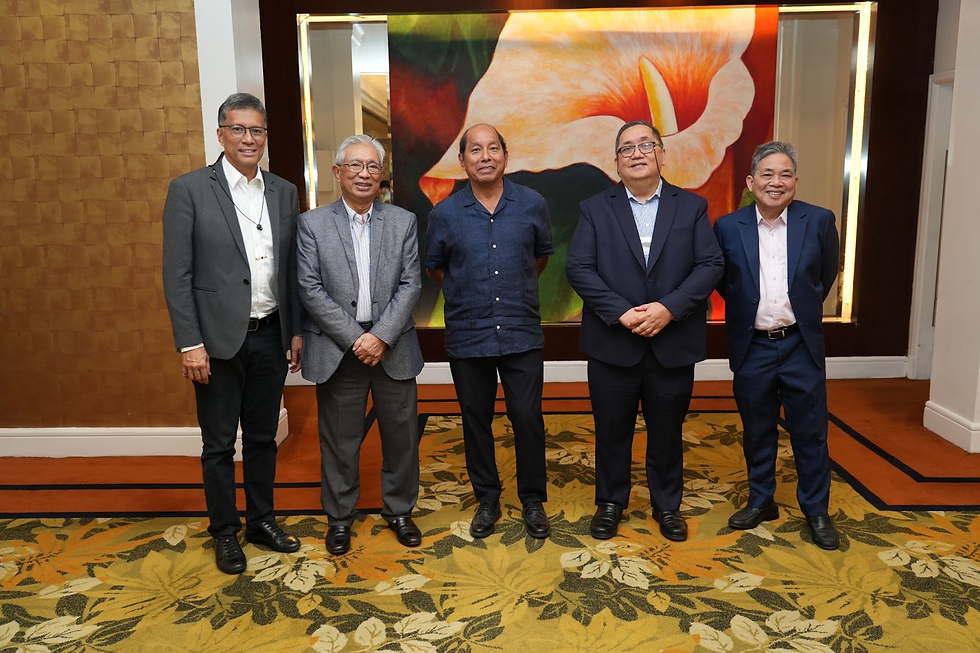IS TRAIN THE CULPRIT BEHIND THE HIGHER INFLATION?
- Action for Economic Reforms
- Mar 15, 2018
- 4 min read
YELLOW PAD
By AJ Montesa
Headline inflation hit 3.9%, based on the revised series, in the month of February. Some analysts find an easy culprit to blame: Tax Reform for Acceleration and Inclusion (TRAIN) or the recently passed tax reform for acceleration and inclusion. While the tax reform did introduce several new or increased excise taxes, we must dispel the notion that TRAIN is the main driver behind inflation or that such is even a debilitating circumstance towards our development.
Careful analysis of the data can shed light onto what TRAIN has contributed to the inflation we observe now. Using the consumer price index (CPI) figures released by the Philippine Statistics Authority (PSA), we can compute the actual increase of inflation attributable to certain products or items. In the following analysis, we break down the old 2006 CPI based data, as it is these figures which have been cited for the month’s 4.48% inflation rate.
Prices of tobacco products and non-alcoholic beverages grew 24.84% and 5.14%, respectively. By our estimation, this reflects as 0.4 and 0.13 percentage point in the overall inflation figure. However, these taxes are doing precisely what they were designed to do — discourage the consumption of tobacco and of sugary beverages.
However, we note that in the case of the tobacco tax, the rate of the increase in prices is more than the tax rate increase. This indicates that tobacco producers have taken advantage of the tax rate increase to increase their profit margin. This is likewise an argument that the current tax on tobacco is not optimal; that instead of government getting a bigger share of the revenue from a harmful product, it is the tobacco manufacturers who are gaining more from the price increase.
Fuel prices also rose due to higher excise taxes. But as others have pointed out, the year-on-year increases were brought about by a confluence of other major factors, particularly rising crude oil prices in the world market and the depreciation of the Philippine peso. This means that higher fuel prices are to be expected.
Parenthetically, Action for Economic Reforms views predictable and gradual depreciation as beneficial to the economy in the sense that it enhances the competitiveness of our exports (exporters’ prices become more attractive) and import-substitutes (imports become more expensive because of depreciation), not to mention the fact that overseas Filipino workers and their families gain more income from a depreciation. Of course, the trade-off is a ruse in inflation. An elementary lesson from economics is the reality of tradeoffs. In this case, trading off a little inflation to gain competitiveness, jobs, and incomes is welcome.
By our estimates, CPI for “Electricity, Gas, and Other Fuels” rose 6.19% and Transport 4.46%. These account for 0.39 and 0.31 percentage point of inflation, respectively. Further investigation reveals that in November 2017, these two items accounted for 0.6 and 0.3 percentage point, telling us that an upward trend was already underway before TRAIN.
The main contributors to inflation (with percentage point) include fish (0.84), meat (0.44), and rice (0.25). Historically, these goods have always been drivers of inflation. This shows that there is no structural difference in the factors driving inflation and only validates the fact that climate or weather is a major determinant of the supply of these goods.
Notably, “Restaurants and Miscellaneous Goods and Services” did contribute a 0.47 percentage point. The tax on sugary beverages has contributed to the increase in prices, but that alone cannot explain the higher prices. Business owners, like the tobacco producers, are engaged in increasing profit. We cannot also discount the possibility that the windfall income gained by the middle and upper classes from the lowering of the individual income tax has been translated into higher consumer spending, including in restaurants, thus the higher prices in this category.
It now raises the question: Are the price increases significant enough insomuch as they weaken the course of our developmental policy? Inflation can be managed in the interim, either through monetary policy to curb overheating or through fiscal policy to mitigate the welfare impact. Four or five percent inflation is not an apocalypse our economic managers can’t handle.
A simple counterfactual is necessary in this conversation on TRAIN: Would we have preferred to retain a marginally lower inflation figure but continue to absorb the long-run cost of a “business as usual” tax regime — limited fiscal space for government, poor infrastructure and social services, a complex, regressive, and inefficient tax system?
While it is prudent to count the cost of any reform, it is conversely ill-advised to ignore or understate the gains. We cannot sugarcoat the trade-off; but we must see the bigger picture: forgoing the needed structural changes would have been immeasurably costlier in the long-run. Poverty is not helped by higher prices, for sure; but it is in fact exacerbated by the lack of resources to provide essential public goods that benefit the poor and unemployed most. This is something pundits must bake into their analysis.
The debate on the inflationary impact of TRAIN is mostly academic at this point. A more fruitful action, for both TRAIN’s supporters and critics, must now take place. We must call upon the concerned agencies to expedite the mitigating measures for the vulnerable sectors through the cash transfers and price-monitoring in the short run and to secure the benefits of the reform for the long term.
AJ Montesa is a member of the Action for Economic Reforms’ tax team.



